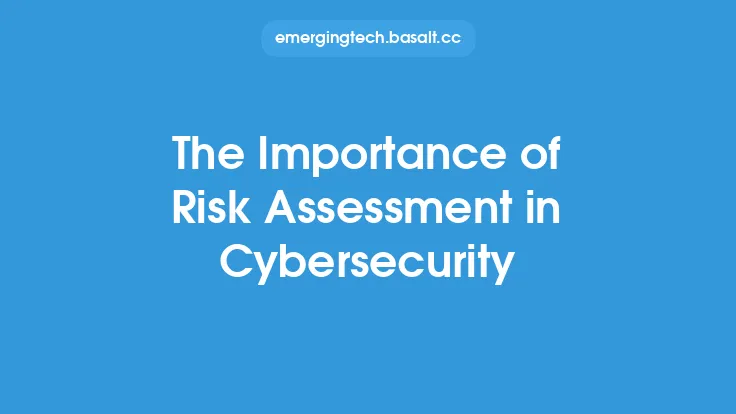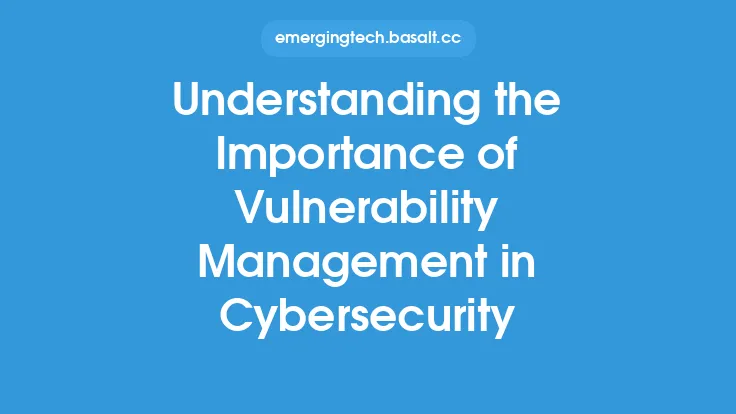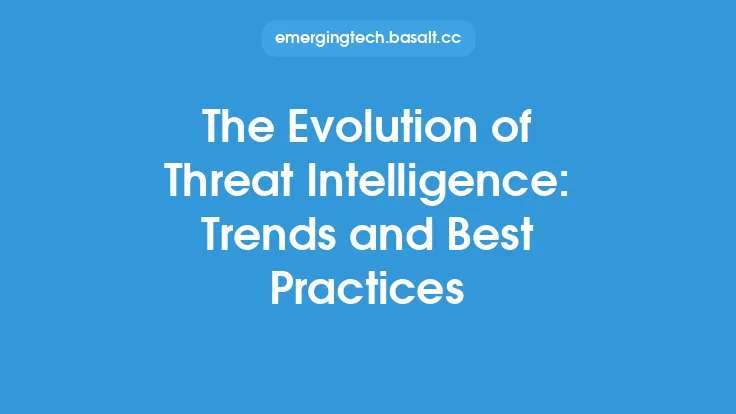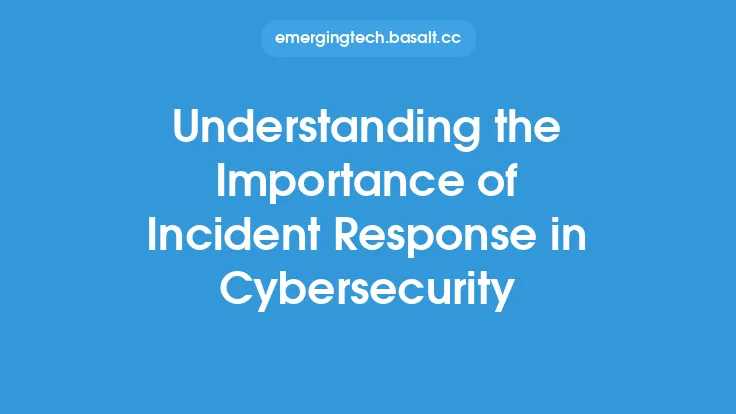In today's digital landscape, cybersecurity is a top priority for organizations of all sizes. As the threat landscape continues to evolve, it's becoming increasingly important for companies to stay ahead of potential threats. One key component of a robust cybersecurity strategy is threat intelligence. Threat intelligence refers to the process of gathering, analyzing, and disseminating information about potential or current cyber threats. This information can be used to inform decision-making, improve incident response, and enhance overall cybersecurity posture.
What is Threat Intelligence?
Threat intelligence is a critical component of cybersecurity that involves the collection, analysis, and dissemination of information about potential or current cyber threats. This information can come from a variety of sources, including open-source intelligence, social media, and human intelligence. Threat intelligence can be used to identify potential threats, understand the tactics, techniques, and procedures (TTPs) used by attackers, and inform decision-making around cybersecurity investments. There are several types of threat intelligence, including strategic, tactical, and operational intelligence. Strategic intelligence provides high-level information about the threat landscape, while tactical intelligence focuses on specific threats and vulnerabilities. Operational intelligence, on the other hand, provides real-time information about ongoing attacks.
Benefits of Threat Intelligence
The benefits of threat intelligence are numerous. By leveraging threat intelligence, organizations can improve their incident response capabilities, reduce the risk of a successful attack, and enhance their overall cybersecurity posture. Threat intelligence can also be used to inform decision-making around cybersecurity investments, ensuring that resources are allocated effectively. Additionally, threat intelligence can help organizations to identify potential vulnerabilities and take proactive steps to mitigate them. This can include implementing new security controls, providing training to employees, and conducting regular security audits. By staying informed about the latest threats and vulnerabilities, organizations can stay one step ahead of attackers and reduce the risk of a successful attack.
How Threat Intelligence Works
Threat intelligence works by leveraging a combination of human and machine-based analysis to identify and analyze potential threats. This can include monitoring social media and dark web forums for information about emerging threats, analyzing network traffic for signs of malicious activity, and conducting reverse engineering of malware samples. Threat intelligence platforms use advanced algorithms and machine learning techniques to analyze large datasets and identify patterns and anomalies that may indicate a potential threat. This information is then used to create threat intelligence feeds, which can be integrated into security information and event management (SIEM) systems, intrusion detection systems (IDS), and other security tools. By leveraging threat intelligence, organizations can gain a deeper understanding of the threat landscape and take proactive steps to mitigate potential threats.
Threat Intelligence Sources
There are several sources of threat intelligence, including open-source intelligence, social media, and human intelligence. Open-source intelligence refers to information that is publicly available, such as news articles, blog posts, and social media updates. Social media can be a valuable source of threat intelligence, as attackers often use social media platforms to communicate and share information. Human intelligence, on the other hand, refers to information that is gathered through human sources, such as interviews, surveys, and focus groups. Other sources of threat intelligence include commercial threat intelligence feeds, which provide real-time information about emerging threats and vulnerabilities. These feeds can be integrated into security tools and systems, providing organizations with timely and relevant information about potential threats.
Threat Intelligence Tools and Techniques
There are several tools and techniques that can be used to gather and analyze threat intelligence. These include threat intelligence platforms, which provide a centralized repository for threat intelligence data and analytics. Other tools include security orchestration, automation, and response (SOAR) systems, which can be used to automate incident response and streamline security operations. Machine learning and artificial intelligence (AI) can also be used to analyze threat intelligence data and identify patterns and anomalies that may indicate a potential threat. Additionally, organizations can use techniques such as reverse engineering and sandboxing to analyze malware samples and understand the TTPs used by attackers.
Implementing Threat Intelligence
Implementing threat intelligence requires a structured approach that includes several key steps. The first step is to define the organization's threat intelligence requirements, including the types of threats that need to be monitored and the sources of threat intelligence that will be used. The next step is to establish a threat intelligence program, which includes the development of a threat intelligence team and the implementation of threat intelligence tools and systems. The organization should also establish relationships with threat intelligence providers and develop a process for integrating threat intelligence into security operations. Finally, the organization should continuously monitor and evaluate the effectiveness of its threat intelligence program, making adjustments as needed to ensure that it remains effective and relevant.
Challenges and Limitations
While threat intelligence is a critical component of cybersecurity, there are several challenges and limitations that organizations should be aware of. One of the biggest challenges is the volume and velocity of threat intelligence data, which can be overwhelming for security teams to analyze and process. Additionally, threat intelligence data can be noisy and irrelevant, making it difficult to separate signal from noise. Organizations should also be aware of the potential for bias in threat intelligence data, which can lead to inaccurate or incomplete information. To overcome these challenges, organizations should implement robust threat intelligence tools and systems, and develop a structured approach to threat intelligence analysis and dissemination.
Best Practices
There are several best practices that organizations can follow to get the most out of threat intelligence. The first best practice is to define clear threat intelligence requirements, including the types of threats that need to be monitored and the sources of threat intelligence that will be used. The next best practice is to establish a threat intelligence program, which includes the development of a threat intelligence team and the implementation of threat intelligence tools and systems. Organizations should also prioritize threat intelligence analysis and dissemination, ensuring that relevant and timely information is provided to security teams and stakeholders. Finally, organizations should continuously monitor and evaluate the effectiveness of their threat intelligence program, making adjustments as needed to ensure that it remains effective and relevant.
Conclusion
Threat intelligence is a critical component of cybersecurity that can help organizations to stay ahead of potential threats. By leveraging threat intelligence, organizations can improve their incident response capabilities, reduce the risk of a successful attack, and enhance their overall cybersecurity posture. While there are several challenges and limitations associated with threat intelligence, organizations can overcome these by implementing robust threat intelligence tools and systems, and developing a structured approach to threat intelligence analysis and dissemination. By following best practices and staying informed about the latest threats and vulnerabilities, organizations can ensure that their threat intelligence program is effective and relevant, and that they remain one step ahead of attackers.





